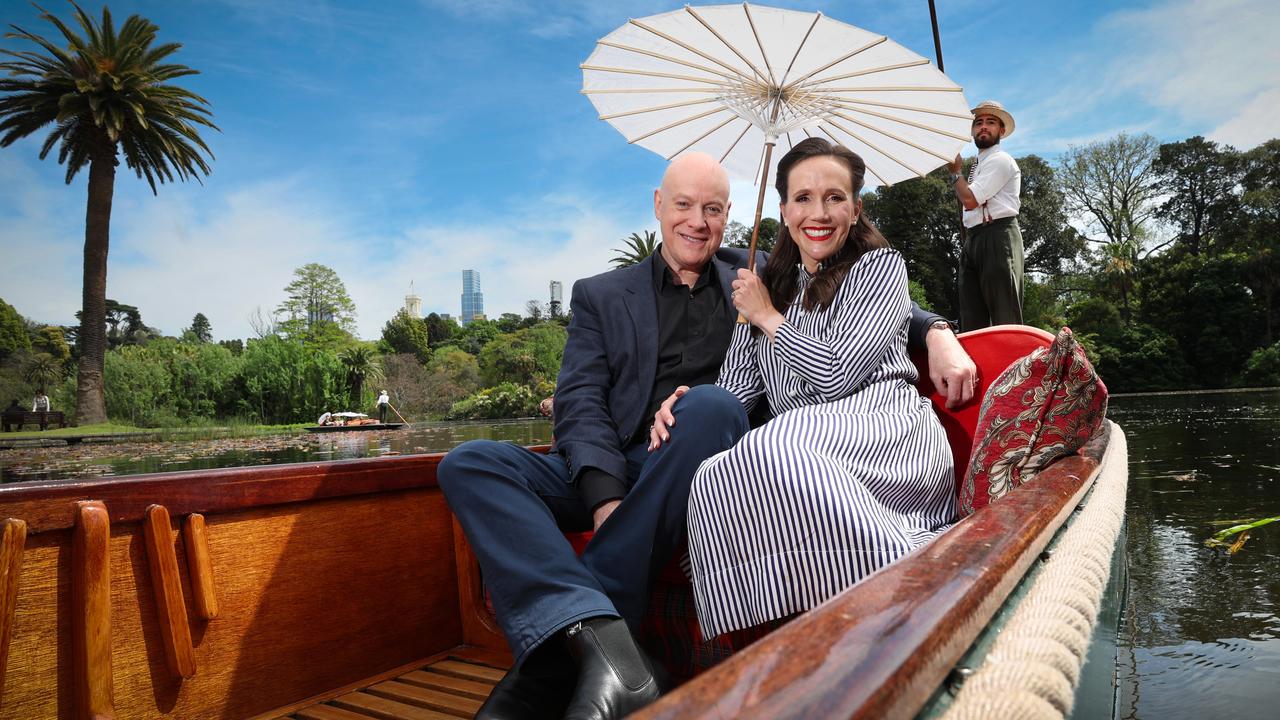‘It’s all about the sash’: The effort and joy behind racing’s most beloved fashion tradition
Fashions on the Field offers many accolades, but none as coveted as the sash. Enthusiasts fought to save the sash and now they continue to honour it.
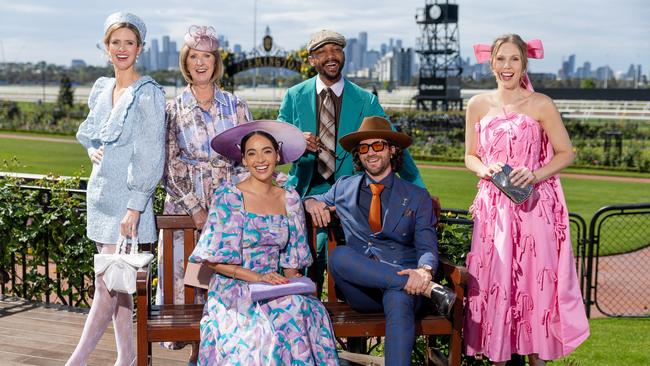
VWeekend
Don't miss out on the headlines from VWeekend. Followed categories will be added to My News.
For all the accolades, prize money and picture opportunities, the grandest prize in the Fashions on the Field remains the honoured sash.
In a move to evolve with the times a couple of years back, the Victoria Racing Club changed the prestigious Fashions on the Field competition from the traditional male and female-led style categories to best dressed and best suited.
There was some predictable neighing, but the modernised makeover was met with the typical enthusiasm and winning smiles the entrants of the historic 62-year-long event have always held.
That was until word got out the VRC was doing away with the winner’s sash.
Talk about fury. There was an immediate outcry. A sash backlash.
Genderless categories was one thing, but no white satin sash draped over the winner on stage was a whole different story.
The mooted move saw a sash-lash by some 2000 people who enter religiously each year, and the VRC quickly took note.
The sash would stay.
“The sash. There is something about it,” says 2017 national winner turned Fashions on the Field judge and Victoria Racing Club ambassador Crystal Kimber-Peters.
“It’s like a crowning moment.”
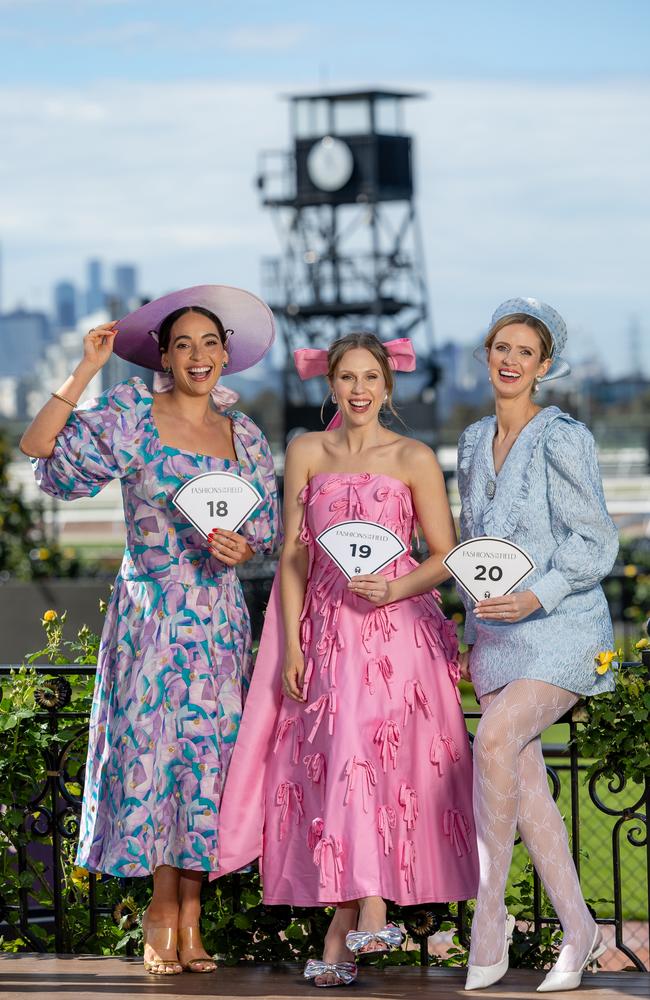
One might think it’s all about winning the sash that has the FOTF enthusiasts thirsty to come back for more. There is, after all, a Facebook page dedicated to the competition, with more than 8000 fervent followers, titled “It’s all about the sash”. But the attraction to the community and subculture that makes up the rich cross-stitch tapestry of Fashions on the Field entrants, from farm hands, to tradies, scientists, athletes and office workers, comes in many forms. And once they grace the stage in their top-to-toe finery, they all share just one word. They’re “hooked”.
For engineer Layce Renee Vocale, 34, it was as a little girl sitting at the Kyabram pub with her farmer father “admiring beautiful fashion” from the stylish entrants on the television each year before the Cup started.
“Dad would finish milking and sort out the rest of the farm and then he would be like: ‘Come on, Lace, let’s get in the truck’ and I would be just so excited,” she says smiling widely, wearing a colour palette of lavender pastels in silk.
“The thing is it actually does stop the nation. It’s not just a pun. Everyone would stop in that moment. The pub stops, everyone comes in to watch. You hit this moment in time and everyone is part of it together, I just love that.”
Since moving to Toorak, Vocale has been regularly entering FOTF since 2018, first wearing a distinctive paper rose millinery headpiece and donning many a sash as a daily winner.
“Oh my gosh, every single time I’m looking around and thinking it couldn’t be me, and when someone says: ‘It’s you, they called your number’ I just start crying. Every. Time. I’m the biggest sook.
“Because it’s not just about me, it’s about what everyone has done to bring the outfit together, it’s a collective, from my dressmaker, to the milliner, to my mum sourcing fabric and unique silk. I want to do it for them ultimately.”
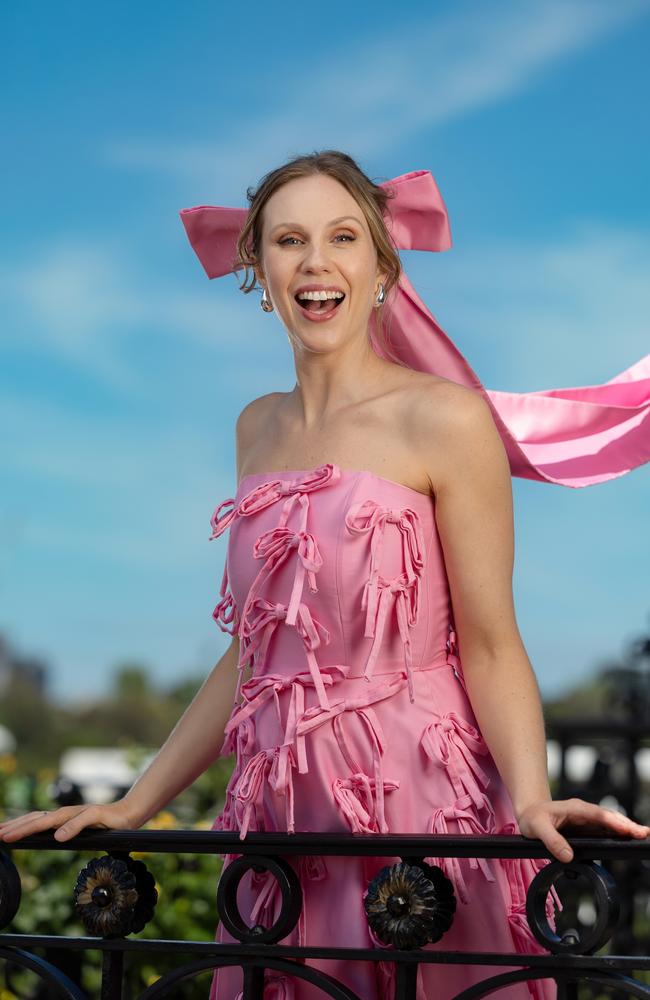
This year Layce’s sibling Tawnee, who still lives at their Kyabram farm and idolises her older sister, is following in her footsteps, after first cutting her teeth in country competitions.
“Each year I delve deeper into my creativity,” Layce says.
Could this finally be her time to take home the national glory?
Meanwhile, 64-year-old milliner Irene Moore starts to get the itch when the roses begin to bloom. Irene knows then that she really has to put the spring in her step.
She has around 12 custom headpieces to create this year for her four daughters, oldest Shandell, Bronwyn and twins Courtney and Andrea, who have been competing annually since 2014.
This will be their most ambitious FOTF entry to date, with each daughter competing across the Melbourne Cup Carnival days from Derby, Cup to the finals on Oaks.
“There isn’t sibling rivalry or anything like that, honestly there isn’t,” Irene beams. “It brings us all together. They can be quite brave in some of their ways they go about it, with their hairstyles and make-up and what not.
“But when the girls and I put our heads together, it releases my brain a little bit and the creativity just flows and I just love when it all comes together.”
Courtney, 31, one of the famed Fashions on the Field “Moore Twins”, is treated in the same regard in this tight-knit FOTF community as the international celebrities gracing Flemington’s Birdcage nearby.
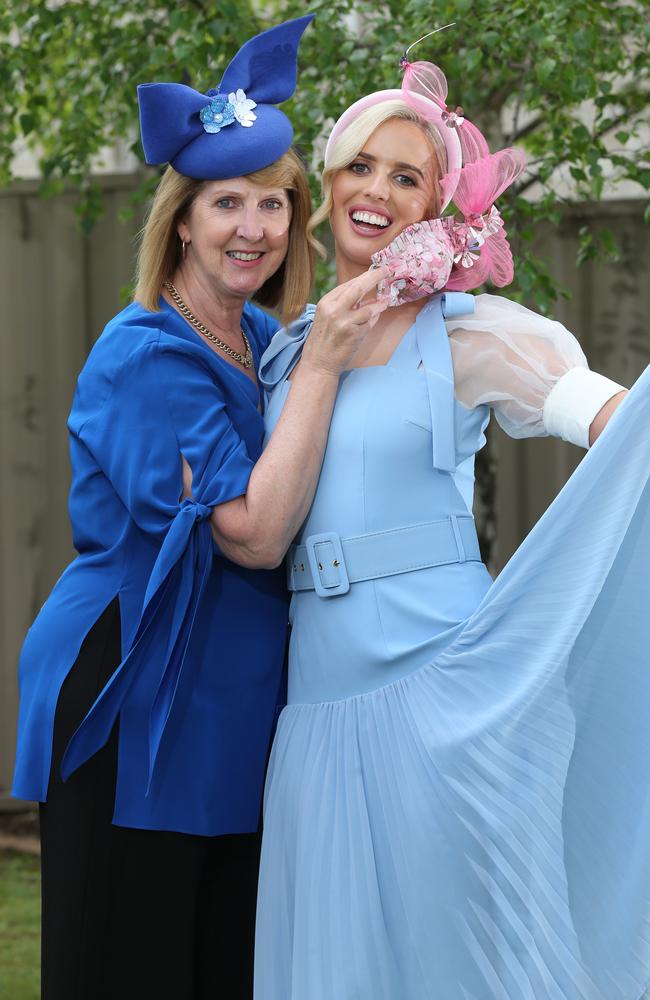
Courtney took home the coveted national winner sash in 2016 and is now considered a rolled gold icon among FOTF enthusiasts. Irene had long been sewing her daughters’ callisthenics costumes before they started competing, working with different and unusual fabrics to create a winning look for the popular Australian artistic sport. But her hands were idle after the daughters had all but grown up and Irene wanted to put them to use again.
The twins first entered the Geelong Cup FOTF competition in 2013, then the following year hit what Irene calls “the big stage” at Flemington, and The Moore Twins were born.
They like to call her husband the “bag man”, carrying essential items like Band-Aids and pins. He drives the expanding family – the girls now all have children of their own – in a mini-van to the big stage each year. Geelong’s Moore Millinery is now a sought-after brand for racegoers looking for custom pieces and unique headwear. Irene regularly enters and has been a finalist in what is now known as the Lillian Frank AM MBE Millinery Award, after the late, great, flamboyant Melbourne socialite.
It is these stories, how the competition has created names and idols like the Moore twins for other up-and-comers, or carved out creative careers, which exemplify Fashions on the Field’s mark on the Melbourne Cup Carnival and why it is marvelled around the world.
When British supermodel Jean Shrimpton attended Derby Day in 1965, shocking the nation and creating an international fashion furore in a convention-breaking outfit – shock horror – not wearing a hat, gloves or stockings and sporting a dress cut well above the knee (12cm to be exact), she was also there to judge the iconic competition.
It had been established just three years prior in 1962 by the VRC Committee in an attempt to “woo women to the races” and it has done just that.
But don’t think it is just for the gals.
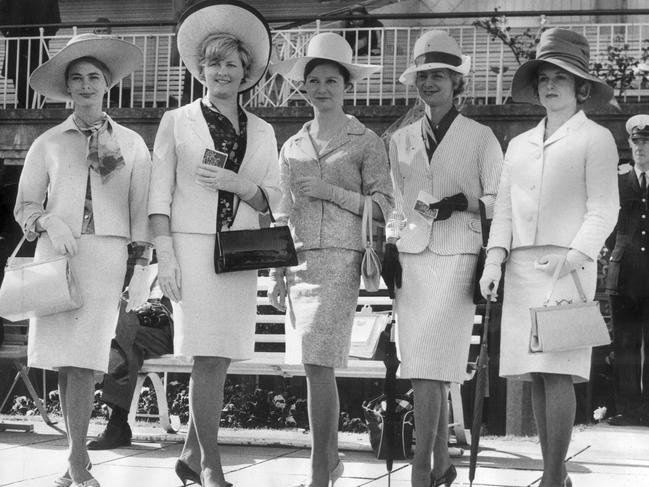
Italian Australian project manager Tommaso Vardanega, 33, and North Melbourne real estate agent Kambale Kambere, 28, are admiring each other’s suits. From the timepieces – Kambere wears two to remind him what time it is back in his home country in the Congo – to the loafers and cut of a double breasted suit.
They converse like longtime friends, but have only recently met after entering Fashions on the Field’s best suited category.
“I use fashion in a way to express myself and it gives me energy,” Kambere says.
“It gives me a little help, I’m not necessarily the most confident guy out there, but dressing the part helps that. Clothes give me the power to do that.”
Vardanega, a best suited finalist last year, agrees, saying the competition has made him meet others who share his “passion for fashion”.
“Over the years my style has evolved after growing up in Italy,” he says. “I’ve been influenced by the modern trends of my second home, Australia, while still maintaining the timeless elegance of true Italian craftsmanship.
“It has helped so much with this competition, because it is your way to express yourself. It is this big event you are participating in. You are coming up to show who you are with a community of like-minded people.
“This is life changing. In Australia, we don’t necessarily have so much of a way to express ourselves, guys seem a bit scared, it’s almost from a fear point of view.”

But there is none of that at The Park enclosure where the FOTF competition now plays out in front of past entrants turned keen observers.
It famously took place on the front lawn of the racecourse, but times have also evolved and stopping play as each race was carried out became impractical due to its growing size.
With a record-breaking prize pool valued at more than $370,000 it is, after all, the richest fashion competition in Australia, if not the world and was recently opened to international competitors.
Some of the entrants miss the grandeur of being seen on track, but it helps that visiting celebrities are also there, from shock jock Derryn Hinch back in the day, to burlesque beauty Dita Von Teese.
This year UK actor and model Elizabeth Hurley will be centrestage to judge and admire the many entrants waiting on the stairs stage left – adjusting a bobby pin, or with a mum straightening a hem – as they hold their number nervously.
“Fashion allows you to communicate; you say to someone ‘nice hat’ and they will recognise that as well,” Kambere says. “When someone gets it, it makes your day.”
That’s because it is a community. Wearing designer freebies, or styled from outliers head-to-toe is not just a big no-no, it is against the rules. This is a far cry from the now heavily manicured and hashtag-sponsored guests inside The Birdcage who look dressed more appropriately for an evening or cocktail event. Some limelight-seeking stars last year were even seen changing outfits mid-afternoon to get some more plugs in.
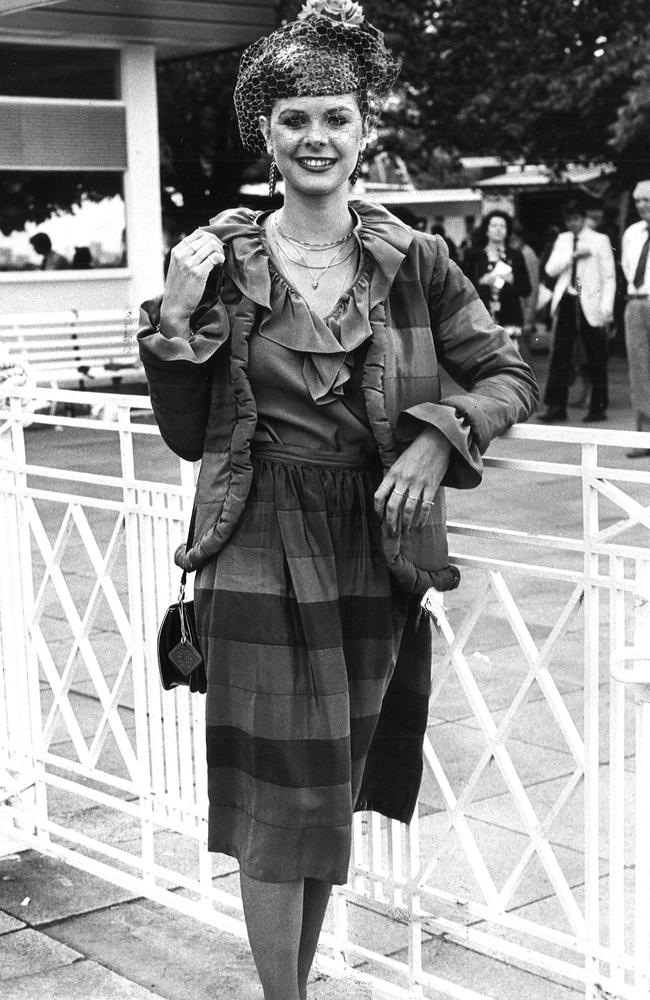
The FOTF sartorial set have left their jobs behind for the day to show up in style and true racing attire. It is a parade of textures, prints, frills and collars, each peacocking and parading, all with headwear pinned perfectly in place and each smiling widely, getting into the spirit.
Irene says she has never been called a stage mum “at least not to my face” and says that while it is a competition it is “like a little family”.
While it is easy to see Layce is hungry for a national win to put in pride of place with her shrine of sashes she has in her “special little cupboard” that she looks at every morning and reflects on, she says she is really just “grateful to be there”.
“You see all the same girls I have worked with, well I guess it’s not really working with, but have known throughout the years like Crystal and Courtney, watching their journeys,” Layce says. “I know it’s a competition, but it doesn’t really feel like a competition and everyone has their own unique twist and that is something I have come to love and embrace. One thing I always do is go out and compliment other people. That’s what it is all about.”
Courtney agrees, saying they are all helping in the toilets “lifting up someone’s Spanx, or telling them if they have lippy on their teeth”.
She considers slowing down one day but has FOMO – fear of missing out – if she doesn’t enter. But now she enters more for the fun of the race day.
There is a strict rule you cannot compete the year after winning and sometimes Courtney has felt awkward as she hasn’t wanted to take that crowning glory feeling away from anyone else hoping for the big win. “Coming out and winning the national final, it was all so surreal, I don’t even remember it really, the media, the attention, the adrenaline rush hits hard,” Courtney says. “I watch videos sometimes just to remember the feeling. After that, everything changed.”
Because once they have felt the hit, from the intricate planning of the outfit from head to toe, to stepping out on to the stage and taking home a sash, there is no going back. “Everyone has a reason to enter, but once we get hooked and, believe me I’ve tried, you can’t unhook us,” Courtney smiles. ■




